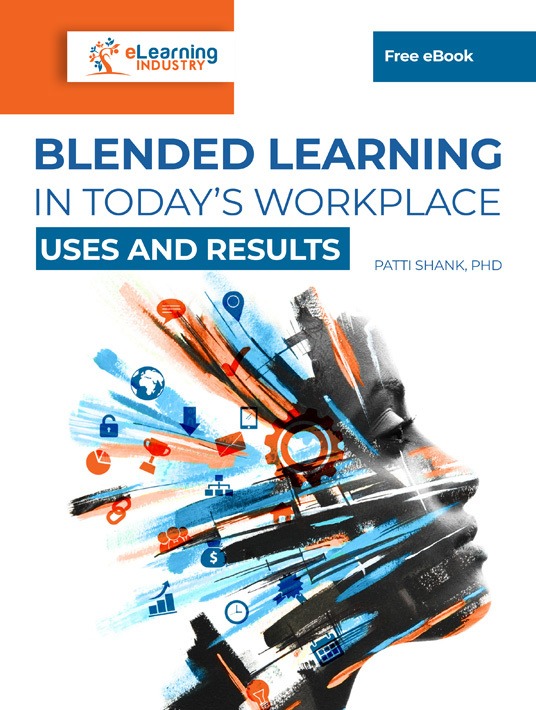How Blended Learning Can Cause Massive Shifts In The Workplace
Patti Shank and her team solicited and compiled responses from an online survey about blended learning. They have received input from 1106 people who took part in the survey and were from 77 countries. This research lasted from 4/2/2019 to 5/3/2019 and was clearly carried out so as to help the team gain insights from workplace learning practitioners around the world about how blended learning is used and perceived in today’s workplace. They wanted to know how workplace learning practitioners define blended learning and what percentage are using blended learning to deliver instruction in their organization. They requested insights about how blended learning is provided and the results organizations experienced. The analysis revealed that how research defines blended learning—a blend of digital and in-person modalities and activities—resonates with most of the respondents. Respondents are using a combination of digital and face-to-face components. The most commonly used components are used in live face-to-face instruction. Responses indicate that respondents are experiencing the benefits outlined by research. And they help us understand why blending offers benefits over either face-to-face or digital alone.

About The eBook: Blended Learning In Today’s Workplace
One of those previously mentioned benefits of a blended learning method is that it ensures all learners are on equal footing in terms of knowledge gain when attending the Instructor-Led Training session. In other words, a video provides the same instruction to all learners, whereas a trainer-led session may have resulted in some material inadvertently being omitted or certain parts highlighted over others due to trainer bias.
There are many benefits of creating an appropriate mix of learning activities, intertwining a variety of disciplined and learning forms. Such a combination could consist of a mix of observation, analysis, practice and accessing learning content via reading, listening or watching. Introducing technology and digital learning into that mix of activities can also offer benefits.
If blended learning could be defined as "a blend of digital/online/technology-based modalities and activities and in-person/face-to-face/offline modalities and activities," the following report analyzes how this definition matches respondents’ use of blended learning and the modalities used in the blend. Patti and her team wanted to examine whether the respondents' experiences equaled how blended learning is used and perceived in research on blended learning, especially in the workplace. To further define blended learning the team has used a definition as stated by the researchers Lupshenyuk and Adams, further clarifying the different levels of blended learning:
- Level 1
Supplementary—Online materials are available to support learning and performance. - Level 2
Integrated—Online materials are integrated with classroom instruction, for example, prework, references, assignments. - Level 3
Competency—Online materials assist with competency development, such as coaching, remedial, and mentoring. - Level 4
Performance—Online materials support increased personal and team performance, such as practice elements, Just-In-Time support, and help for learning on-the-job.
These researchers present barriers to workplace blended learning, including technical barriers such as internet access and delivery issues. They also discuss other obstacles, such as not knowing how to design for blending and lack of support. There are many delivery methods, and this abundance of blending choices leads to confusion in deciding what and how to blend. This aligns with Lupshenyuk and Adams’ discussion that many people don’t know how to design for blending. Kim and fellow researchers, another one of Patti's references, point to numerous studies that indicate better satisfaction and learning outcomes for blended versus strictly online instruction. For example, studies have shown better assessment scores and reduced attrition for blended courses. Other studies show higher satisfaction due to increased interactions and more flexibility. Another study which Patti used, showed that better learning outcomes happen because of the combining of online and face-to-face instruction. That’s because blending offers the convenience and flexibility of online without losing the extremely critical outcomes that come from face-to-face (and other live) interactions.
Ending On A Perfect Note
The results of Patti Shank's survey show us that blending is widely used by respondents, and they generally have very positive results. The research definition of blended learning, a blend of digital/online/technology-based modalities and activities and in-person/face-to-face/offline modalities and activities, is one that most respondents agreed with. They could also tell that the given definition was on target for many respondents by analyzing the mix of components they use. There was widespread use of all of the live face-to-face, live online, and self-paced online components, although some were used much more than others. Researchers describe barriers to workplace blended learning, including technical and organizational barriers, amongst other things. Despite difficulties, respondents expressed positive views about the results they gained from blended learning programs, which closely match what researchers find. Research finds increased satisfaction and better learning outcomes.
Clearly, these are important and desired outcomes. Comments also support better outcomes, as showcased by these comments. The results that respondents gain from blended learning show that it is worth dealing with difficulties and getting over hurdles. Concerns about not knowing how to blend or how to use different components would make these outcomes harder to obtain. If you would like to do delve into the data, I would definitely recommend downloading the eBook Blended Learning In Today’s Workplace for some amazing insights on what moves learning practitioners around the world, as well as information about how blended learning is used and perceived in today’s workplace.

